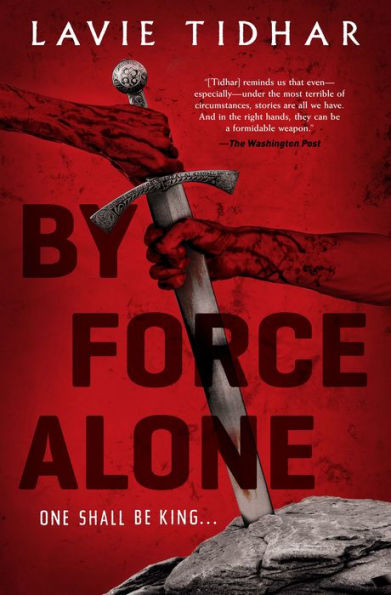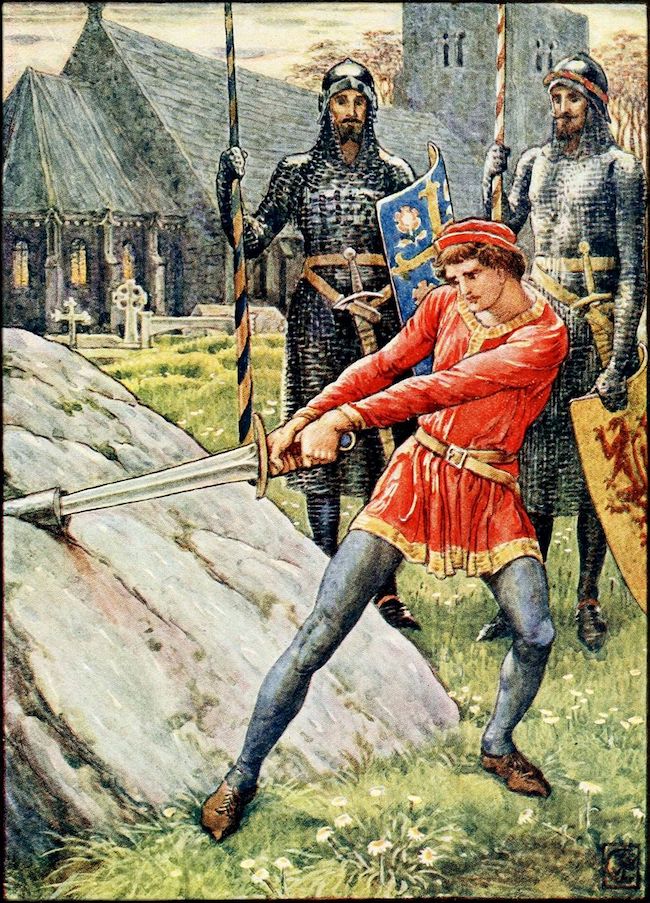Is an Arthurian story a telling or retelling? What are the Arthurian mythos, exactly? And was Merlin really an old dude with a big bushy beard, or do we all just remember it wrong?
To answer these questions, I chose the only path one could, reasonably, take: that is, I got dropped, through no fault of my own, into teaching a group of American undergrad students an advanced literature course on British Fantasy Fiction.
How and why and are you mad? are probably questions for another time and story.
The course, moreover, was designed by a medievalist, of all things. He’s a super nice guy, but he somehow expected me to dwell into the minute details of “Sir Gawain and the Green Knight”, a Middle English poem noted mostly for, well, introducing the figure of the Green Knight into the Matter of Britain. Which, confusingly, is one of the only handful of texts actually written by British people in the Matter of, well, Britain. As I found out.
I never had the slightest interest in King Arthur, Camelot, Lancelot and all that jazz. I vaguely knew the same story everyone else sort of knows, or think they know. Mostly from watching Monty Python, probably. Or the one time I bothered to read T.H. White’s The Sword in the Stone. So I started reading. And what I discovered was, eventually, interesting enough to write a 125,000 word novel about. Because, you see, most of what you think you know about King Arthur is wrong.
The basic story came from a guy called Geoffrey of Monmouth, who wrote a manuscript called A History of the Kings of Britain (only it sounds fancier in Latin) in which Britain was an empty island populated only by savage giants until, and I am totally not making this up, Brutus of Troy comes ashore after the Trojan War and kills all the giants. And then he starts a town he calls New Troy, which is London. Old Geoff doesn’t stop there, but eventually introduces Uther Pendragon, Arthur, Guinevere, and Merlin (who he borrows from Welsh sources). No one ever remembers the first part of the book about the giants, and Geoffrey did call it a “history” – so it must be true!
Thing is, people really liked the story. A Celtic king who rises to defeat the Anglo-Saxons! And there’s a wizard! And a dragon! The people who liked it were mostly French. After all, they conquered England fairly recently and they hated the stupid Anglo-Saxons. So French writers like Chrétien de Troyes and Robert de Boron, and a German writer called Wolfram von Eschenbach, and a bunch of other people you never heard of like Wace and whoever the guy was who wrote “Gawain”, they all start writing their own versions of the story, and adding bits and pieces to it. Like Lancelot. Or the Round Table. Or Camelot. Or the Lady of the Lake. Or pretty much everything else. And finally, of course, they all figure out – as I finally did – that nothing happens in the middle of the story! So they make up the Holy Grail, which starts off as a saucer of blood, becomes a fallen starstone and finally turns into the cup that caught Jesus’ blood, and is guarded by a secret society started by Joseph of Arimathea. Because of course it is. Thus giving us the great gift that is The Da Vinci Code. Or Indiana Jones and the Last Crusade.
Oh and also, do you know why Merlin looks like a fat old dude with a big beard? Because he’s a shapeshifting kid and when he meets Arthur, Arthur doesn’t believe he’s a wizard cause he’s just some kid. So Merlin goes away and comes back as Gandalf, and then Arthur goes, Oh, ok, you’re a proper wizard then! And without Merlin pulling that switcheroo we wouldn’t have Gandalf or Dumbledore or any other fat bearded wizard of your choosing.
Basically, as I found out, you don’t know s—t. And neither did I. At some point I needed a cat and then a friend pointed out to me that there was a cat! Her name’s Cath-Palug and she’s a monstrous fish-cat who kills people. Because of course she is. She’s in like a ton of these stories!
Buy the Book


By Force Alone
The point I’m trying to make here is, you don’t so much retell the Arthurian mythos as tell it, because the whole thing is essentially – to put it in modern terms – one giant shared-world fanfiction universe. No one “owns” it any more than someone owns the detective sitting in his office as a dame walks in (“I knew she was trouble… I just didn’t know how much!”) or the “walking through a magic door into a fantasy land” routine (the first magic wardrobe, incidentally, isn’t even to Narnia. It’s not even in Erich Kästner’s earlier classic The 35th of May, or Conrad’s Ride to the South Seas. It’s probably in an Edith Nesbit short story). The Matter of Britain’s is its own sort of fantasy megatext.
. . . Used mostly for nationalistic purposes, I have to say, and revived for that express purpose by the Victorians, but still.
Also, it really is a sort of terrible story. As I realised, finally, it’s Scarface or The Godfather. It is literally about a guy rising to power by, well, killing the opposition, becoming king, marrying a wife who doesn’t love him and finally dying when a younger, more ruthless contender (Mordred) kills him in turn. I mean Merlin literally helps Uther rape Igraine and this is how Arthur’s born. It’s horrible! And these things are in the kids’ books versions!
And for some reason no one knows this! It drives me mad, because this is the actual story, not all that rah-rah chivalry everyone pretends it is. But you know what? That’s ok. At least you didn’t have to be one of my students! I think they were very confused. We were all relieved when it was over.
So that’s the story. I just added some Jews, and kung-fu, and aliens. But the rest is told exactly as it (didn’t) happen.
…and there’s a cat.
(Note to students: Tor.com is not generally an accepted primary source of citation, but you may use this post as a secondary source, using standard MLA or Chicago style formats. For homework, please write a 125,000 word novel to be delivered by mid-term. Thank you).
Lavie Tidhar is the World Fantasy Award winning author of Osama (2011), The Violent Century (2013), the Jerwood Fiction Uncovered Prize winning A Man Lies Dreaming (2014), and the Campbell Award and Neukom Prize winning Central Station (2016), in addition to many other works and several other awards. His latest novels are the Locus and Campbell award nominated Unholy Land (2018), By Force Alone (2020) and debut children’s novel Candy (2018 UK; as The Candy Mafia 2020 US). He is also the author of the comics mini-series Adler. New novel The Escapement is forthcoming in 2020.










